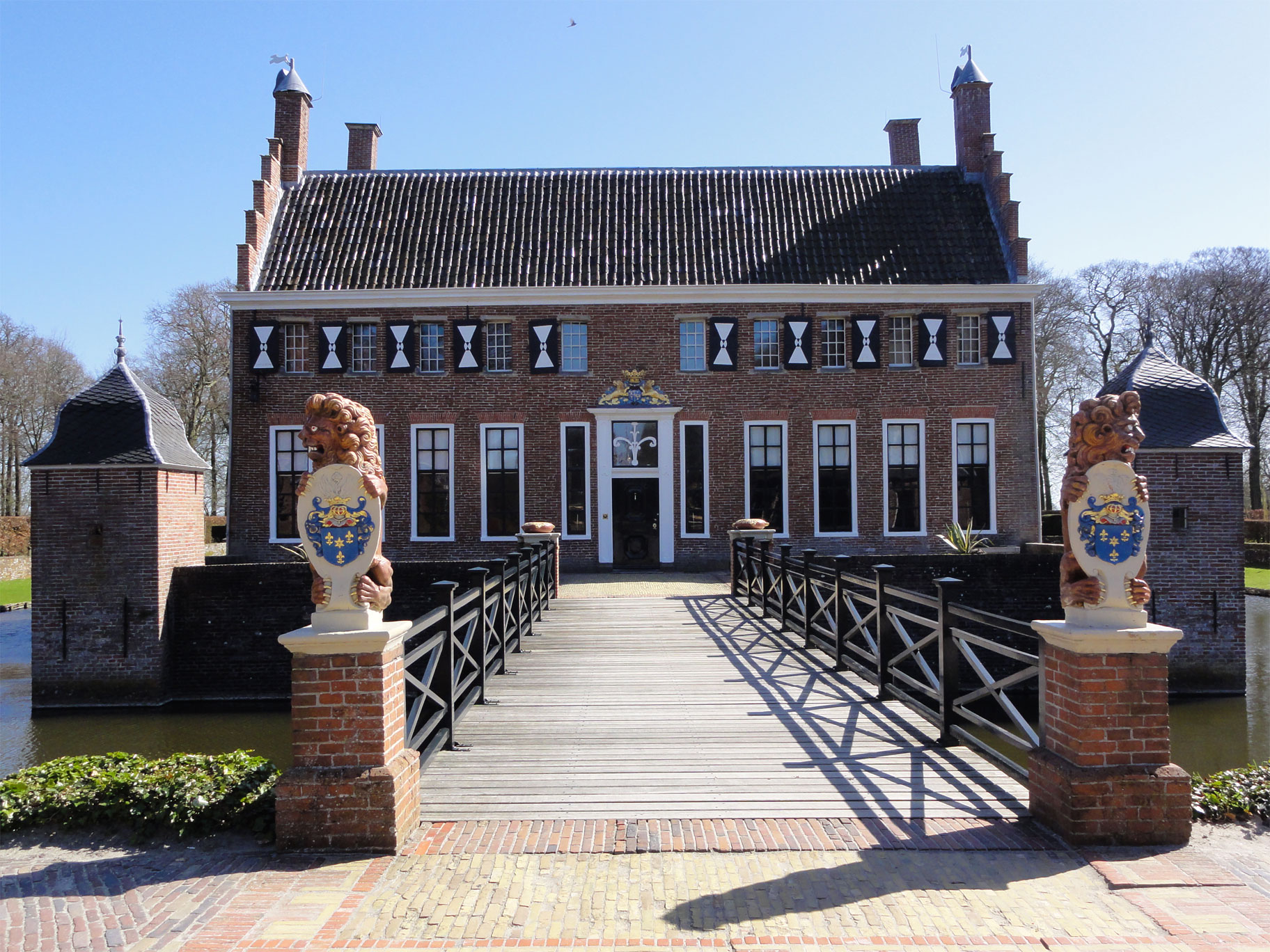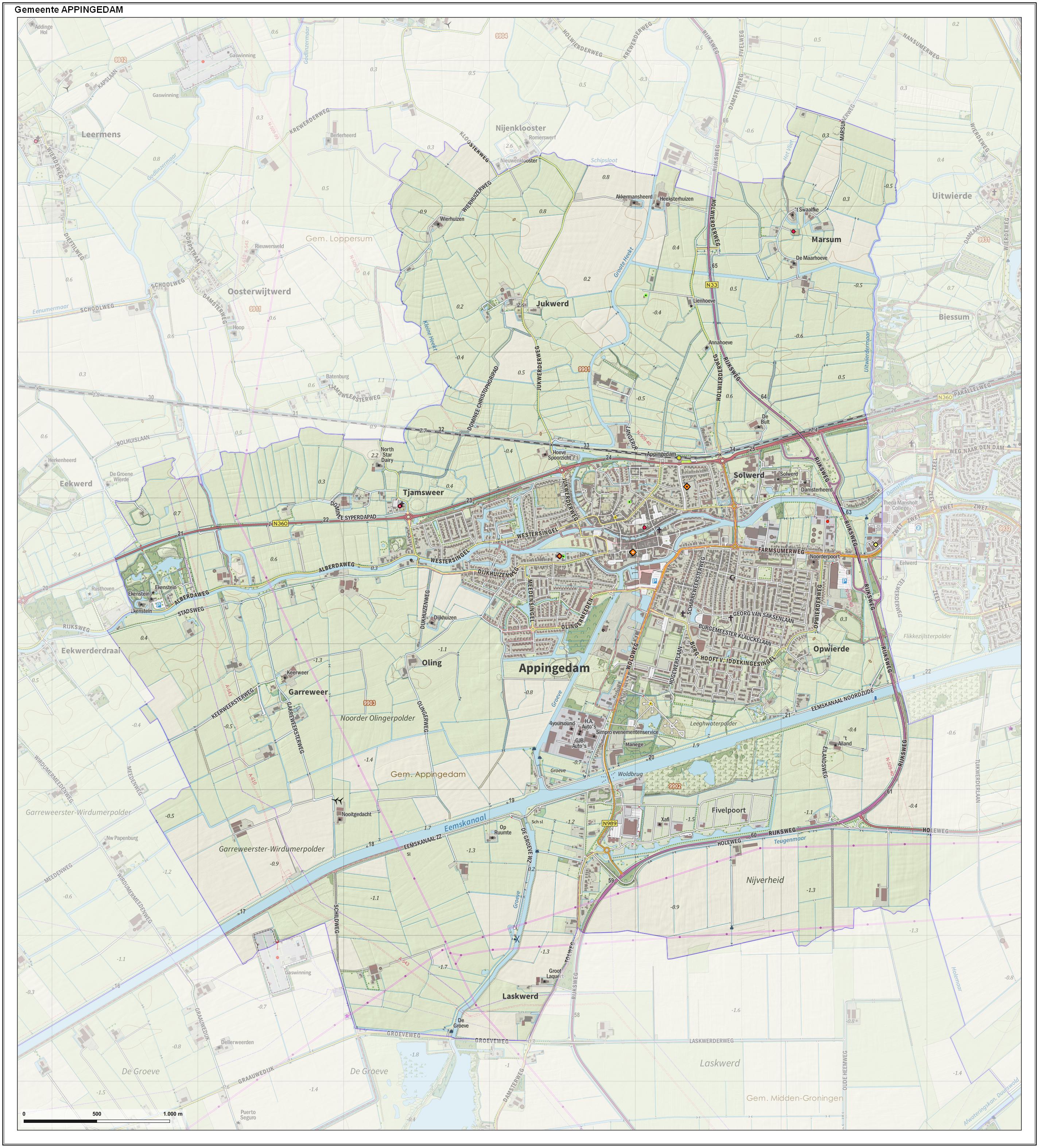|
Wirdum, Groningen
Wirdum () is a village in the province of Groningen in the Netherlands. It is situated close to the Damsterdiep - a channel connecting the city of Groningen to Delfzijl - on two artificial dwelling hills, known locally as 'Wierden'. As of 2021, Wirdum had a population of 365. Church Like almost every village in Groningen, Wirdum, too, has a historical church around which the village is centred. The church was originally built in the 13th century, although it has gone through some changes such as the removal of the church tower in favour of a Flèche in 1878. Damsterdiep The is a channel connecting the city of Groningen to the coastal town of Delfzijl, allowing access to the Dutch most eastern part of the Wadden Sea, the Eems. Historically the channel can be divided into two parts at the village of Ten Post, approximately 5 km south-west of Wirdum. The oldest north-eastern part was constructed before the year 1000 and was directly connected to the sea up until the 14th centu ... [...More Info...] [...Related Items...] OR: [Wikipedia] [Google] [Baidu] |
Village
A village is a clustered human settlement or community, larger than a hamlet but smaller than a town (although the word is often used to describe both hamlets and smaller towns), with a population typically ranging from a few hundred to a few thousand. Though villages are often located in rural areas, the term urban village is also applied to certain urban neighborhoods. Villages are normally permanent, with fixed dwellings; however, transient villages can occur. Further, the dwellings of a village are fairly close to one another, not scattered broadly over the landscape, as a dispersed settlement. In the past, villages were a usual form of community for societies that practice subsistence agriculture, and also for some non-agricultural societies. In Great Britain, a hamlet earned the right to be called a village when it built a church. [...More Info...] [...Related Items...] OR: [Wikipedia] [Google] [Baidu] |
Flèche (architecture)
A flèche () is the name given to spires in Gothic architecture. In French the word is applied to any spire, but in English it has the technical meaning of a ''spirelet'' or ''spike'' on the rooftop of a building. In particular, the spirelets often built atop the crossings of major churches in mediaeval French Gothic architecture are called flèches. On the ridge of the roof on top of the crossing (the intersection of the nave and the transepts) of a church, flèches were typically light, delicate, timber-framed constructions with a metallic sheath of lead or copper. They are often richly decorated with architectural and sculptural embellishments: tracery, crockets, and miniature buttresses serve to adorn the flèche. Flèches are often very tall: the Gothic Revival spire of Notre-Dame de Paris (18582019) by Eugène Viollet-le-Duc was about before its destruction in the Notre-Dame de Paris fire, while the 16th century flèche of Amiens Cathedral is high. The highest fl ... [...More Info...] [...Related Items...] OR: [Wikipedia] [Google] [Baidu] |
Brickyard
A brickyard or brickfield is a place or yard where bricks are made, fired, and stored, or sometimes sold or otherwise distributed from. Brick makers work in a brick yard. A brick yard may be constructed near natural sources of clay or on or near a construction site if necessity or design requires the bricks to be made locally. Brickfield and Brickfields became common place names for former brickfields in south east England. See also * Brickworks, another type of place where bricks are made, often on a larger scale, and with mechanization * Clay pit, a quarry or mine for clay * Kiln A kiln is a thermally insulated chamber, a type of oven, that produces temperatures sufficient to complete some process, such as hardening, drying, or chemical changes. Kilns have been used for millennia to turn objects made from clay int ..., the type of high heat oven that bricks are baked in References Sources * External links * Bricks {{Manufacturing-stub ... [...More Info...] [...Related Items...] OR: [Wikipedia] [Google] [Baidu] |
Borg (castle)
A borg (; Gronings: ''börg'') is a former stronghold or villa in the province of Groningen, Netherlands. Borgs used to belong to noblemen or prominent citizens. A comparable building in the neighboring province of Friesland is called a stins. History A borg usually started as a brick building, a 'steenhuis' (literally meaning 'stone house'), built in the 13th or 14th century. A steenhuis was usually 11 meters long and eight meters wide. The walls were thick, often more than one meter in thickness. Most were originally made of wood because stone was expensive, but less flammable. A steenhuis was not used as a house, but offered protection in times of danger. There is one original steenhuis left in Groningen, the Iwema-steenhuis in Niebert. Some steenhuises were enlarged and became more like a castle; this would be considered a borg. A good example of a borg that originated from a steenhuis is the Fraeylemaborg. In the building itself you can still find a wide wall with emb ... [...More Info...] [...Related Items...] OR: [Wikipedia] [Google] [Baidu] |
Appingedam
Appingedam (; gos, n Daam) is a city and former municipality in the northeastern Netherlands. Although there is no certainty as to the exact age of Appingedam, historical research demonstrates that the place in which the city would eventually be built had been inhabited for over a millennium. Specifically, the area in which the earliest traces of human settlements have been reported is the Wierde, a quarter located in the northern part of the city centre. Today, a narrow, winding street by the same name runs along the waterfront as a living testimony to the times gone by. The characteristic landmarks of the old Wierde are still recognisable today: the historical East-West Canal, called “Diep,” dug to the south of the Wierde, diked on both sides, still defines the unique layout of the downtown Appingedam. Little is known about the exact age and origin of the name of Appingedam. It came into existence on the banks of the Delf, the present Damsterdiep, around 1200. The name o ... [...More Info...] [...Related Items...] OR: [Wikipedia] [Google] [Baidu] |
Ten Post
Ten Post is a village in the Dutch province of Groningen. It is part of the municipality of Groningen. The village is located along the Damsterdiep and about from Groningen. History The village was first mentioned in 1380 as Tenpost, and means "at the simple bridge". Around 1425, the , a canal from Groningen to Delfzijl, was dug, and Ten Post started to developed at the intersection of the canal and the road from Stedum to . There used to be three '' borgs'' (castles) near Ten Post: Tuwinga, Oldenhuis and Tamminghahuizen. Oldenhuis was built in the mid-14th century and Tuwinga was built nearby in the early 15th century. The owners of the two ''borgs'' did not get along and feuded over the ownership of the road along their castles. On several occasions, it escalated into an armed conflict. In 1631, Oldenhuis was bought by Edzard Rengers, the owner of Tuwinga. Oldenhuis was neglected, and demolished in 1715. Tuwinga lasted until 1788. The Reformed Church was the first church con ... [...More Info...] [...Related Items...] OR: [Wikipedia] [Google] [Baidu] |
Eems
In DOS memory management, expanded memory is a system of bank switching that provided additional memory to DOS programs beyond the limit of conventional memory (640 KiB). ''Expanded memory'' is an umbrella term for several incompatible technology variants. The most widely used variant was the Expanded Memory Specification (EMS), which was developed jointly by Lotus Software, Intel, and Microsoft, so that this specification was sometimes referred to as "LIM EMS". LIM EMS had several versions. The first widely implemented version was EMS 3.2, which supported up to 8 MiB of expanded memory and uses parts of the address space normally dedicated to communication with peripherals (upper memory) to map portions of the expanded memory. EEMS, an expanded-memory management standard competing with LIM EMS 3.x, was developed by AST Research, Quadram and Ashton-Tate ("AQA"); it could map any area of the lower 1 MiB. EEMS ultimately was incorporated in LIM EMS 4.0, which supporte ... [...More Info...] [...Related Items...] OR: [Wikipedia] [Google] [Baidu] |
Wadden Sea
The Wadden Sea ( nl, Waddenzee ; german: Wattenmeer; nds, Wattensee or ; da, Vadehavet; fy, Waadsee, longname=yes; frr, di Heef) is an intertidal zone in the southeastern part of the North Sea. It lies between the coast of northwestern continental Europe and the range of low-lying Frisian Islands, forming a shallow body of water with tidal flats and wetlands. It has a high biological diversity and is an important area for both breeding and migrating birds. In 2009, the Dutch and German parts of the Wadden Sea were inscribed on UNESCO's World Heritage List and the Danish part was added in June 2014. The Wadden Sea stretches from Den Helder, in the northwest of the Netherlands, past the great river estuaries of Germany to its northern boundary at Skallingen in Denmark along a total coastline of some and a total area of about . Within the Netherlands, it is bounded from the IJsselmeer by the Afsluitdijk. Historically, the coastal regions were often subjected to large floods ... [...More Info...] [...Related Items...] OR: [Wikipedia] [Google] [Baidu] |





